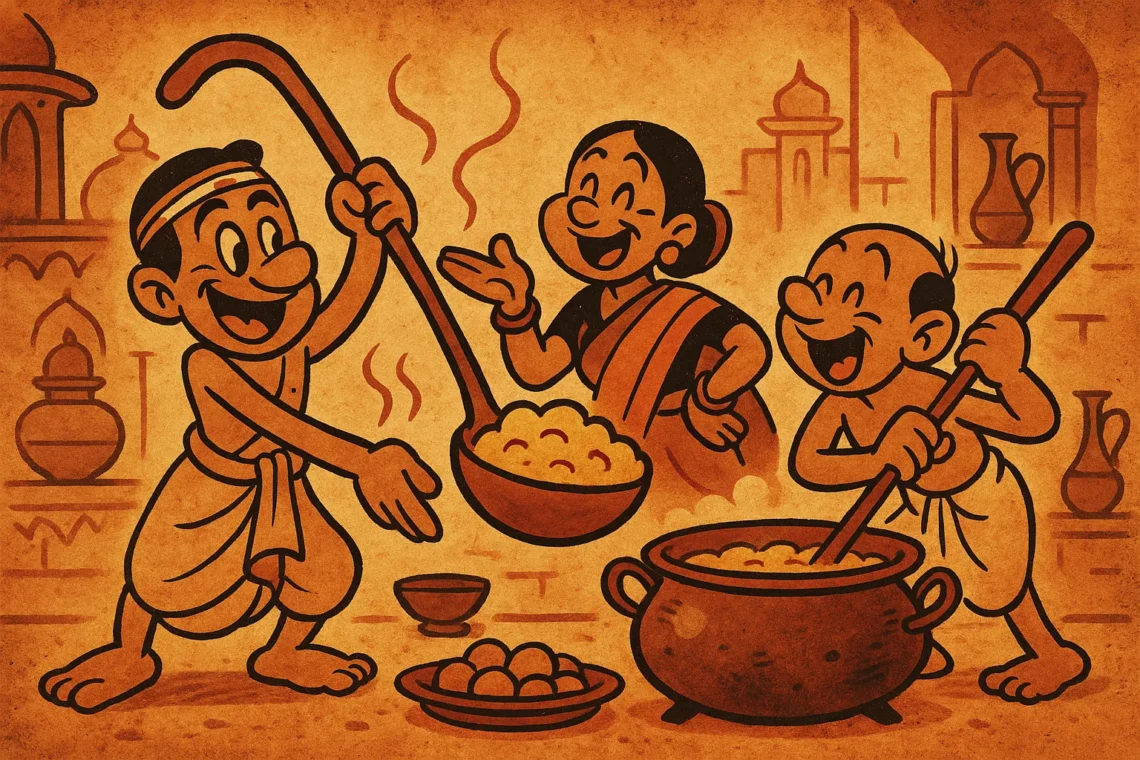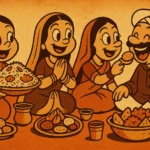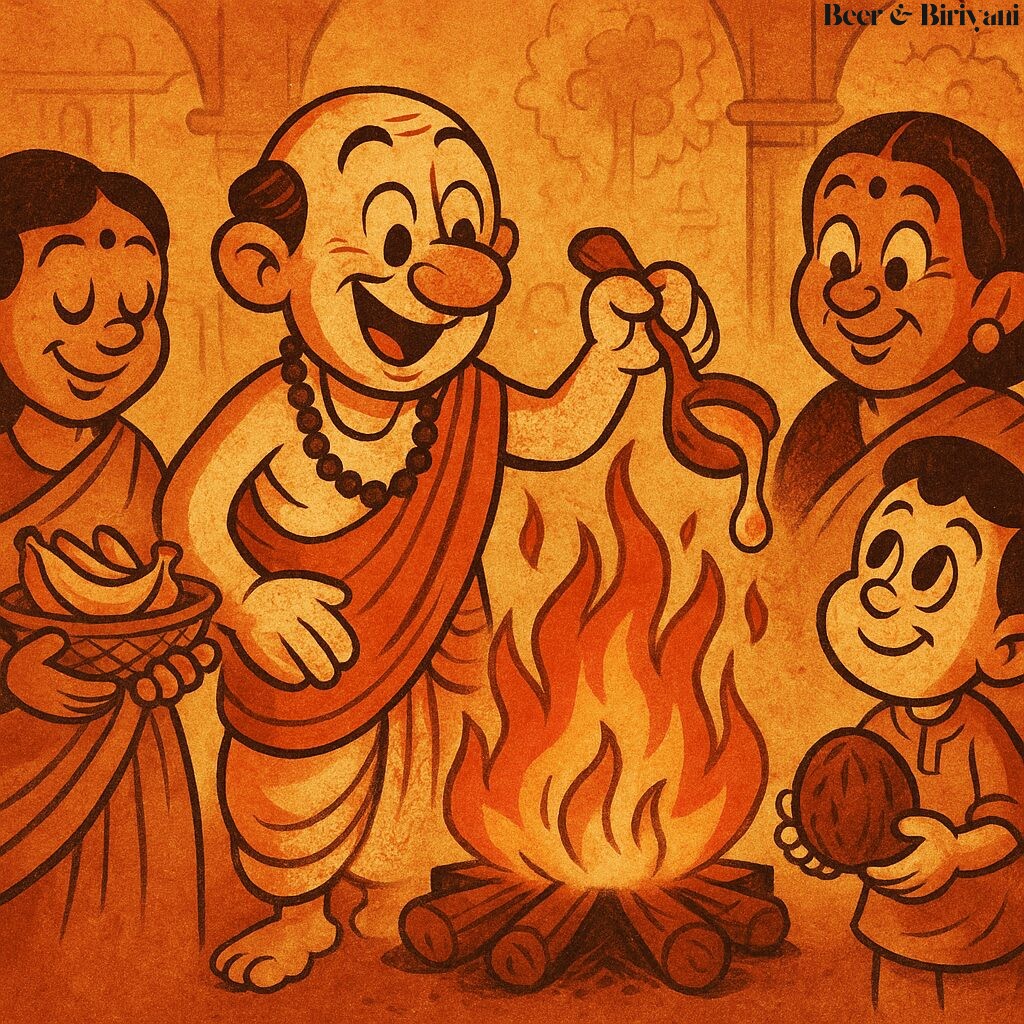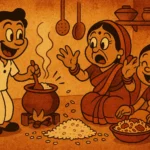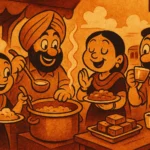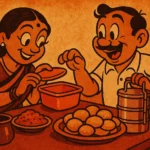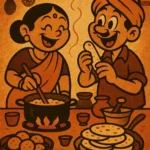In most kitchens, the tools are modest—spoons that fit in your drawer, pots that fit on your stove, and recipes scaled to feed a family of four. But step into a temple kitchen in India, and you enter another universe. Here, a “small batch” feeds 500. The pots are the size of bathtubs. And the ladles? They’re taller than some of the volunteers. These aren’t utensils—they’re instruments of devotion. Forged in fire, stirred with faith, and wielded with a grace that borders on spiritual choreography.
The first time I walked into a temple kitchen in Udupi, I froze. Not from awe—though there was plenty of that—but because of the sheer scale. Steam hissed, fires crackled, and in the middle of it all, people moved with the calm efficiency of a seasoned orchestra. One person was stirring sambhar in a cauldron that looked like it could hold a jacuzzi. Another was frying puris with a slotted ladle the size of a satellite dish. No one shouted. No one measured. And yet everything was precise. That’s the magic of temple kitchens. They operate on instinct, rhythm, and recipes passed down not in cookbooks, but in muscle memory.
The Scale of the Sacred
What sets temple kitchens apart isn’t just the quantity of food—they’re often preparing meals for thousands—it’s the quality. Everything is made fresh, without garlic or onion in most places, and yet bursting with flavor. The rice is perfectly fluffed. The dal is balanced. The vegetables are cut to a uniformity that would make any Michelin chef weep. And all of it is stirred, flipped, and lifted using tools that require a certain spiritual upper body strength.
Those giant ladles are a marvel. Long wooden handles darkened by years of use, round metal scoops dented and burnished by fire. Some are so big they require two people to maneuver. Watching someone stir pongal in a copper pot the size of a car tire using one of these ladles is oddly meditative. It’s food as offering, not performance. There’s no plating. No garnish. Just substance and sincerity.
Kitchen Hierarchies and Harmonies
Despite the scale, there’s structure. The temple kitchen is not chaos—it’s choreography. There’s the head cook, often a soft-spoken man with turmeric-stained hands and encyclopedic knowledge of grains. Then the junior cooks who prep, clean, and taste. The volunteers who show up like clockwork, knowing exactly which steel pot goes where. And the person responsible for adding salt at the end—always a respected role, because at this scale, one mistake means 5,000 bland lunches.
No one carries a timer. No one has a recipe binder. Yet the food tastes the same every single day. The same rasam, the same bisibele bhath, the same melt-in-your-mouth laddoos. And it all comes down to an intuitive sense of balance—what to add, when to stir, how much to scoop. It’s culinary jazz on a divine scale.
Feeding the Many, One Leaf at a Time
The food cooked in temple kitchens isn’t just distributed—it’s honored. Served on banana leaves or in steel plates, ladled out by volunteers who move in sync. The act of serving becomes sacred. No one is rushed. Everyone is fed. Seconds are offered without being asked for. And you always, always get the impression that there’s enough. Enough rice. Enough curry. Enough ghee. Enough grace.
In places like the Golden Temple in Amritsar, the scale is staggering—over 100,000 people served every single day. In Puri Jagannath Temple, the mahaprasad is prepared in clay pots stacked in a pyramid over wood fire, and still arrives perfectly cooked. These aren’t kitchens—they’re miracles on a daily rotation.
The Aftertaste of Devotion
Back home, when I stir dal in my modest little saucepan, I sometimes think about those giant ladles. About the hands that lift them. About the quiet strength it takes to make food for thousands and never once taste it until it’s offered to the deity. About how something so grand can still feel so intimate when you take the first bite sitting cross-legged in the temple courtyard, surrounded by strangers who somehow feel like family.
Because that’s what temple kitchens do. They erase ego. They soften hunger. They amplify flavor with something no spice blend can offer—devotion, at scale.
And every time I see a big pot bubbling on a street corner or smell ghee sizzling in a large vat, I smile. Somewhere, someone’s lifting a giant ladle. And somewhere, someone’s about to be fed—not just with food, but with faith.
Born in Mumbai, now stir-frying feelings in Texas. Writes about food, memory, and the messy magic in between — mostly to stay hungry, sometimes just to stay sane.

